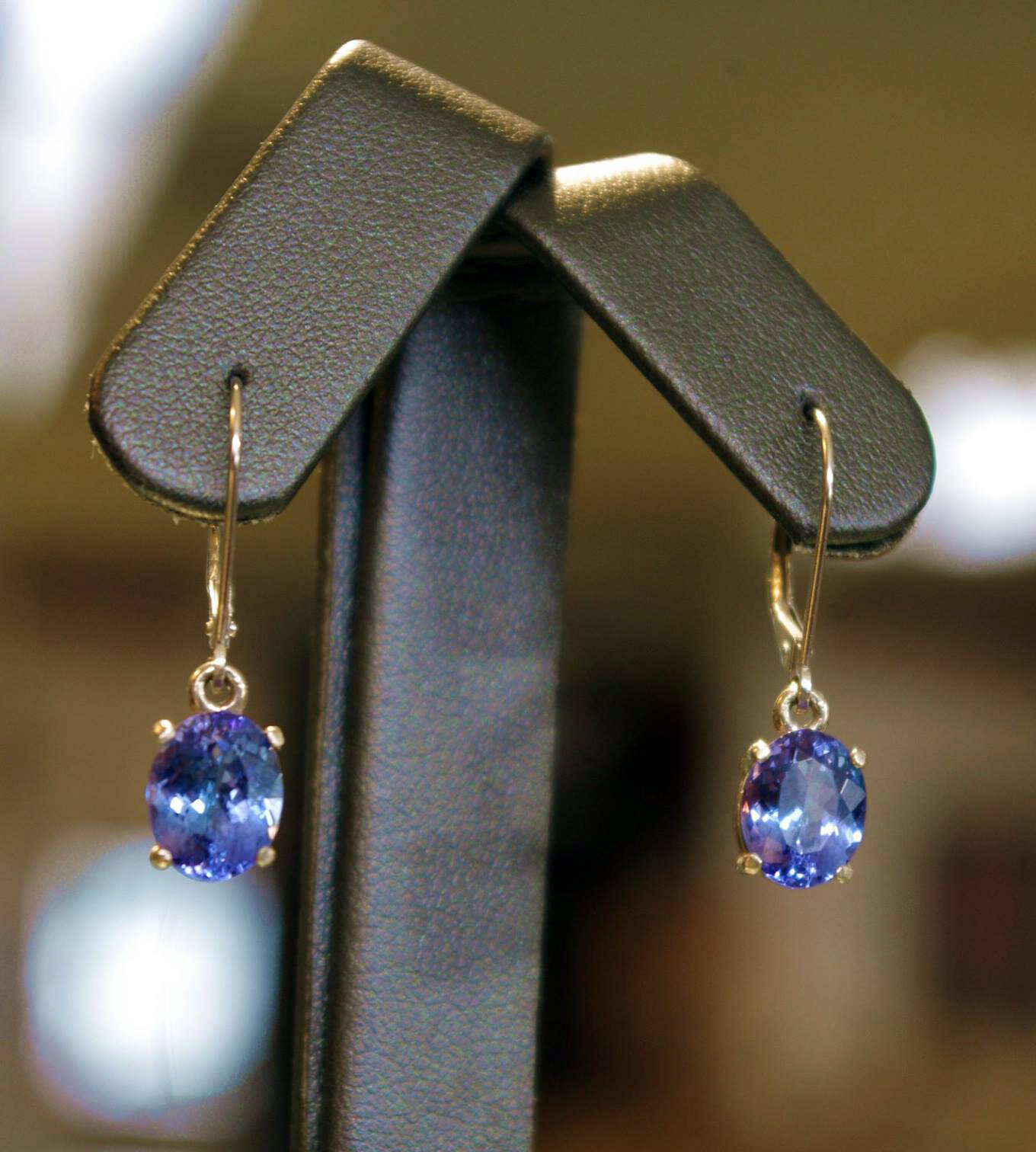Tanzanite
Tanzanite, the birthstone for December, may be a relative newcomer to the world of colored stones, but it was one of the most exciting gem discoveries of the 20th century. Poised between lush blue, vibrant violet, and rich purple, exotic Tanzanite is found in only one place on earth, near majestic Mount Kilimanjaro. The Tanzanite birthstone is often described as “velvety”, mostly because of its deep and saturated color, which ranges from a pure rich blue to violet, with the blue considered most valuable.
Definition:
Tanzanite’s appearance is influenced greatly by its pleochroism, which is the ability of a gemstone to show different colors when viewed in different crystal directions. This was documented in scientific papers not long after its discovery. In 1969, “American Mineralogist” described the gem’s pleochroic colors as “red-violet, deep blue, and yellow green”. Today most gems are heat treated, which removes or reduces the yellow green, or brownish pleochroic color, maximizing the blue and violet.
Top-quality Tanzanite can be violetish blue – similar to a fine sapphire color – or a unique, predominantly violet hue all its own. Some stones might also appear more purplish depending on how the cutter chooses to orient the fashioned gem. Also, cutters can fashion gems with a range of colors depending on how much weight they want to retain from the rough.
Both the violet and blue pleochroic colors are readily visible in a fashioned stone when it is gently rocked and tilted. This means that every tanzanite is a blend of these pleochroic colors. The exact face-up color depends in the inherent color of the original rough, its size, the colors the cutter favors, and the light the finished gem is viewed under. Cool lighting – like daylight equivalent fluorescent – will emphasize the blues, while warm lighting – like incandescent – will make it appear more violet-to-purple.

The History of Tanzanite:
Blue stones emerging from Tanzania were identified as the mineral zoisite in 1962. Not until 1967, though, did prospectors locate the primary source for this December birthstone: the Merelani Hills. It was eventually named tanzanite in honor of its country of origin. Masai tribesman, Ali Juuyawatu, stumbled upon a cluster of highly transparent, intense violet-to-blue crystals weathering out of the earth in Merelani and is credited with finding the first Tanzanite crystal in 1967. He alerted a local fortune hunter named Manuel d’Souza, who quickly registered four mining claims.
D’Souza hoped that he’d been shown a new sapphire deposit. It was later described as a zoisite variety by the German Gemological Society. Instead, the deposit contained one of the newest of the world’s gems. Within a short time, 90 more claims appeared in the same 20-square-mile area. No none was quite sure what the beautiful crystals were, but everyone wanted to lay claim to the profits they were certain to produce. The new gem would eventually be known as Tanzanite, and it would, at times, rival the Big 3 in popularity.
Tiffany & Company believed that Tanzanite had international appeal and became its main distributor. In 1968, Tiffany launched a major advertising campaign to promote it. With its vivid colors, high clarity and potential for large cut stones, almost overnight Tanzanite quickly became a sensation with leading jewelry designers and other gem professionals, as well as with customers who had an eye for beautiful and unusual gems.
This December birthstone became famous due to a necklace with five faceted Tanzanites of extraordinary quality owned by Elizabeth Taylor.
Symbolism:
This December birthstone have a high vibration and are known as stones of transformation. These high energy crystal stones are known as one of the most valuable aids for metaphysical healing. Tanzanite is also popular because it is beautiful to wear and because they are strong stones that assist you in developing psychic powers. It can accelerate spiritual growth, and brings your mind into direct participation with the energy of the heart chakra.
Tanzanite strengthens the heart and is used to treat mental illness. It brings wisdom, truth, dignity and spiritual mastery. This birthstone is a stone of judgement and long life, promotes introspection, and can result in profound wisdom when used well.
Merelani Hills, Northern Tanzania
Location:
The Merelani Hills of Northern Tanzania is the only place on earth where tanzanite is mined commercially. Grass-covered hillsides, scrub brush, rocky soil and an occasional tree form the landscape. In the major mechanized operations there, thousands of workers recover tanzanite from mines dug over 300 feet deep into the earth. North of the mines tower the snow-covered slopes of Mount Kilimanjaro.
Care & Cleaning:
This December birthstone ranges from 6 to 7 on the Mohs Scale of Hardness, and is resistant to the effects of normal heat, light and common chemicals. Still, Tanzanite may crack if it is exposed to very high temperatures, or sudden temperature changes, and it abrades easily. It can be attacked by hydrochloric and hydrofluoric acids.
Most Tanzanite begins as brownish zoisite that is heat treated to produce the blue to violet hues that characterize this birthstone. The resulting color is permanent, and there are no additional durability problems.
Tanzanite is best set in earrings or pendants. While not recommended for daily wear in a ring, with a protective mounting and some care this December birthstone can be an attractive special occasion jewel.
Warm, soapy water is the best way to clean Tanzanite, and ultrasonic and steam cleaners are never recommended.
Why We Love This Gemstone
Pleochroic: Tanzanite is pleochroic, showing three different colors when viewed from different directions.
One Place on Earth: Commercially mined in only one place, Tanzanite is rarer than Diamond.
Rich Blue: Tanzanite’s rich blue-to-violet hues can be exceptionally beautiful.
COLOR
Deep saturated violet blue or blue velvet are the most valuable tanzanite colors. Paler hues are more commonly found.
CLARITY
Eye-visible inclusions decrease the value of tanzanite, particularly in lighter colored stones.
CUT
Tanzanite is available in a wide range of shapes, but cushion-cut and oval cuts are most common.
CARAT
Tanzanite color is less saturated in smaller sizes. Gems must be above five carats in size to have fine color.
Need help selecting an amazing gift?
We all need a little help sometimes. Whether the gift is for someone special or even yourself, let us guide you. Give us a call or drop us an email.





